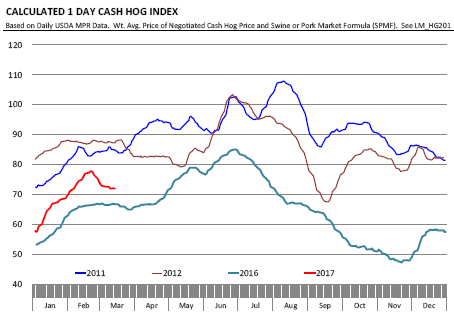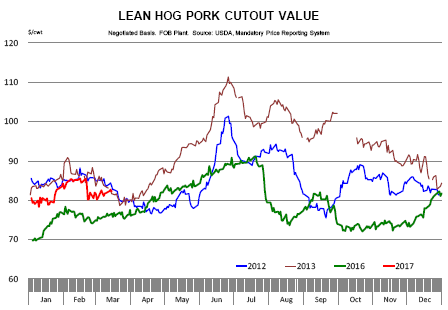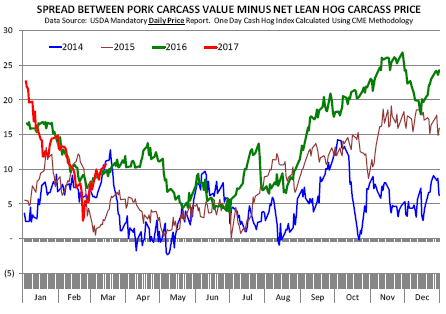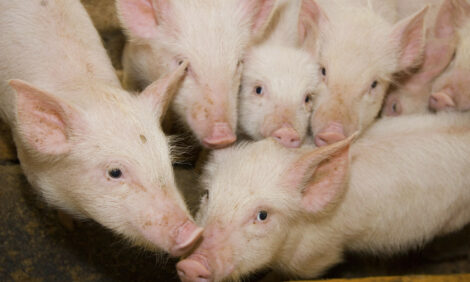



CME: Cash Hog Prices Trading Sideways for Past Week
US - Cash hog prices have been trading sideways for the past week or so following the sharp runup in price during February, according to Steiner Consulting Group, DLR Division, Inc.The IA/MN negotiated base price last night was quoted at $67.54/cwt, $1.2 higher than the previous close but $1 lower than where it was at the start of the month. For the last three weeks, however, the IA/MN negotiated base has averaged around $68/cwt, reflecting a somewhat more stable market and in line with what we normally see at this time of year.
The following chart shows the 1-day cash hog index, calculated using the CME methodology. The index is nothing more than a weighted average of the net prices for hogs traded either on a negotiated basis or on a pork/swine market formula basis. The key word here is net rather than base, which is why the last index value is around $71.95/cwt.

The net price includes various premiums over the base that packers pay to producers for meeting performance goals. You will notice that both the cash hog index chart (above) and the pork cutout chart show 2012/2013 and 2016/2017. We decided to leave out 2014 and 2015 which were significantly impacted by the spread of PEDv and its aftermath.

Lean hog and pork cutout prices so far have been trending above the levels we saw a year ago even as pork production is about 3 per cent higher than last year. As we have noted before, hog slaughter in February was a touch under what was implied in the latest Hogs and Pigs report but generally, hog numbers have been consistently above year-ago levels while hog weights have been modestly under the levels we saw last year.
We don’t find the lower weight numbers particularly surprising, after all the barns are full and the market has provided an incentive for producers to market their hogs as soon as they can. The true surprise is how resilient pork demand has been, with pork exports certainly providing a much needed lift.
The weekly pork export data continued to show that pork exports remain in excellent shape. The last official monthly pork trade data pegged January shipments at 457.9 million pounds on a carcass weight basis, 19.6 per cent higher than the previous year.
Based on the weekly export shipments we calculate that pork exports in February were around 445 to 450 million pounds, 16 per cent higher than last year and March at this point is on track to be over 500 million pounds, +17 per cent higher than a year ago. The increase in pork exports has absorbed much of the increase in pork production so far and helps explain why pork prices are holding together so far.
Pork packer margins also remain in good shape. The bottom chart is simply the difference of the two charts above, i.e. cutout value minus lean hog price. This is also referred to as the meat spread and offers an indication of packer margins. Keep in mind that to calculate the full gross margin one also needs to account for drop credits and those credits today are about $4.8/head higher than they were a year ago.

In other words, as good as packer margins were in March/April of 2016, today they are even better. Futures markets are currently pricing summer hogs around $78/cwt, which would imply a pork cutout in the high 80s (if we follow last year’s trends).
The key to break above such levels would be robust pork export demand and higher prices for competing meats. The risk to the downside, in our opinion, would come from much larger than expected supplies (keep an eye on the inventory report 30 March) and any issues that may develop with major trading partners (remember Mexico is 30 per cent of pork trade).








